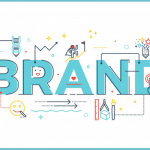Data is a strategic resource that helps organizations make decisions, improve performance, and develop. Among all the existing data sources, the LinkedIn network can undoubtedly be called a gold mine for professionals, companies, and advertisers.
LinkedIn boasts over 900 million users globally, making it an ideal platform to source information on businesses, careers, sectors, and individuals. Yet, it is challenging to get insightful information from LinkedIn due to using effective tools and techniques, one of which is scraping. This article will answer many questions about LinkedIn scraping. Read and learn more.
What is LinkedIn Scraping ?
LinkedIn scraping is the act of pulling information from profiles, employer pages, job listings, and other LinkedIn pages. Such information may include individual names, positions, organization names, companies, industries, regions, abilities, etc.
LinkedIn scraping itself means harvesting information by writing web scraping scripts or using APIs to collect massive amounts of data that could otherwise take thousands of hours to gather.
The information acquired is useful for different business strategies and activities, such as recruitment, selling services, advertisements, and market surveys.
How Does The LinkedIn Scraping Procedure Occur ?
LinkedIn scraping mostly involves retrieving certain information using executables or scripts compatible with specific LinkedIn web pages. The process can include:
- Fetching web pages : The scraper requires permission from the LinkedIn server to access web pages.
- Traversal of HTML content : It traverses the HTML of the pages to recognize the data fields that are of interest.
- Data storage : The mined data is stored in formats like CSV and JSON or databases for further processing.
Another point to consider is that LinkedIn does not allow any form of scraping unless allowed by the LinkedIn terms of service; thus, any form of scraping needs to be done ethically.
Why is LinkedIn Scraping Important for Your Business ?
With the help of LinkedIn scraping, businesses can gain the information advantage that helps them better understand professional communities, potential employees, and trends. Here’s why it matters:
Improving the recruitment and selection of talents
LinkedIn scraping is beneficial for HR specialists and recruiters. It enables them to quickly compile a list of potential candidates through pre-embedded data descriptors, including job title, skill set, work experience, etc. With this information, recruiters can develop a pool of pre-screened candidates to fill various positions without necessarily having to use the services of recruitment companies or depend on job sites.
Better quality sales leads and prospects
Sales teams can use LinkedIn scraping to get data about potential clients, such as their positions and the sectors and firms they are attached to. In this way, these prospects are better understood and help businesses improve conversion rates. For instance, scraping information about key decision-makers in a particular industry assists the sales team in targeting potential markets.
Competitive analysis
LinkedIn scraping is useful as it allows businesses to gather information on competitors’ company pages, job offers, and employees. This information could uncover trends in hiring, strategic direction, and positioning, which would benefit business operations.
Market research and insights
Employers can also use data scraping to gain insights into industry trends, demanded skills, and geographical locations. This benefits new start-ups or small businesses that wish to search for promising markets and opportunities or analyze their customers’ behavior within certain specialized sectors.
Targeted advertising campaigns
Through LinkedIn scraping, marketers can easily identify and define their market audience. By conducting surveys and gathering data such as job titles, industries, and interests, businesses can develop targeted campaigns that enhance click-through rates and yield far better returns.
Establishment of large information repositories
LinkedIn scraping can be used to develop good local or global databases of professionals or companies in individual industries. These databases can be used to identify potential clients and partners or to establish a strategy.
Challenges with the LinkedIn Scraping
Everything has its challenges, including LinkedIn scraping. While LinkedIn scraping offers numerous benefits, it also comes with challenges:
- Ethical and legal issues : Companies should not engage in data scraping without permission since LinkedIn prohibits it, and anyone who uses it to benefit themselves is likely to be banned or charged with the law.
- Data integrity : This is especially the case when some of the information available on Web pages is actually scraped, and it may require a substantial amount of time to separate relevant from unnecessary information.
LinkedIn Scraping Ethical Policies
To harness the benefits of LinkedIn scraping while maintaining ethical standards, consider these best practices:
- Make sure that all collected data is available freely. Get only data that the user willingly posts on his profile or the company’s page.
- When scraping data from LinkedIn, it’s important not to violate their rate limits, and it is advisable to sample data at appropriate time intervals.
- It should respect privacy, not collect personal or sensitive data, and follow regional or international data privacy regulations, such as GDPR or CCPA.
- Try out other possibilities. If scraping directly from LinkedIn is unfeasible, use the LinkedIn API or other permissible data sources under LinkedIn guidelines.
Tools for LinkedIn Scraping
LinkedIn scraping can be undertaken using scripts developed by the user or pulled from third-party scraped tools such as Python. The tools you should use for LinkedIn scrapping must comply with the platform’s ethical policies. Besides, lemlist is one of the best LinkedIn scraping tools.
Conclusion
LinkedIn scraping is a technique with great potential that can open many opportunities for organizations. The same applies to recruitment strategies and selling and marketing techniques, among other things, and the scraped data is useful and applicable.
However, while scraping this social media platform, entrepreneurs should ensure that they follow ethics and the law. As has already been mentioned, with the help of the right tools and limiting the companies’ objective to scraping only public data, they can use LinkedIn scraping to avoid the above-mentioned pitfalls and stay compliant with data protection regulations. LinkedIn scraping is useful in the era of big data because it provides a way to ascertain knowledge.



















